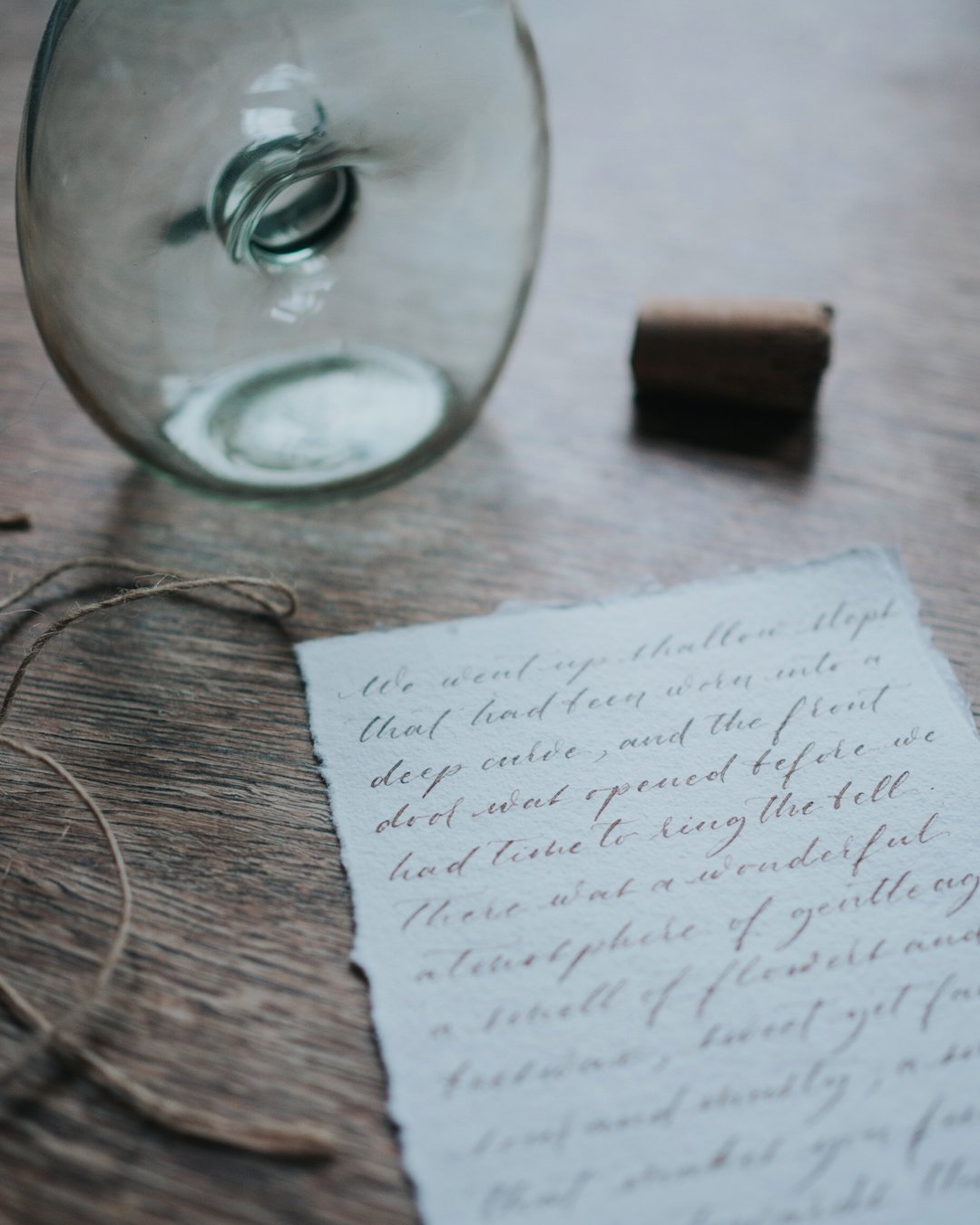The difference between calligraphy and handwriting
An icebreaker at a workshop in my old job required us to share both what our role was, and what alternative occupation we would pick. I already did calligraphy on the side so of course my answer was “a calligrapher”. We were then paired up for an exercise with the customary flipchart paper and marker pens to record our work. I agreed to do the writing up. My colleague started acquiescing that of course it would be better, since I was a calligrapher… but stopped mid-sentence, confusion on her face, as she saw my wonky scrawl appear from under that thick felt tip.
Etymologically, calligraphy simply means beautiful writing. In practice, what goes into making the writing beautiful changes the nature of it – up to a point.
Learning calligraphy involves taking letters down to the basic shapes they are composed of, a little like learning the sounds that make up the spoken word in a language. There are straight lines, and curved lines, in different directions. There are also thick and thin lines: thin going up, and thick going down. You practise the basic shapes first, then make them into letters, then make letters into words.
To some extent, we do also do this when we first learn to write. But, just as when learning to speak a new language, once we’ve mastered the basics, we move on to words and sentences, to speed and efficiency. In calligraphy, the focus remains on those shapes, on precision, on consistency. This is why calligraphers often say that calligraphy is more akin to drawing than writing.
Another key difference is the tools we use for calligraphy. The characteristic thick and thin lines of calligraphy are created by specific writing implements. They only, really, make sense because of how they are made. Thick lines are thick because of the pressure you apply, and/or the angle at which you hold your pen or brush, as you form them. You can get this effect with flexible or angled nibs, with brushes or brush pens, or even with a pencil. You can’t do it with a biro. With a flexible calligraphy nib, you physically cannot create a thick line when drawing a line upwards. To me that’s partly what was entrancing about learning pointed pen calligraphy: mastering the technique and the style as a harmonious whole.
Having said all this… I think the differences can be exaggerated. It’s true that you don’t need ‘nice’ handwriting in order to learn calligraphy. But it’s also true that learning calligraphy is likely to affect your handwriting. It’s certainly changed mine. I can’t write as fast in my calligraphy style as in my own scrawl, but I usually write in a mix of the two. I practise modern calligraphy, rather than traditional scripts, so my personal calligraphy style is also influenced by my handwriting. I also like to blur the lines between calligraphy and handwriting, by keeping my nib in contact with the page as much as possible as I write (rather than lifting it with every separate stroke), allowing some variety in the shape and size of letters, embracing the vagaries of my nib dragging a paper fibre through the ink. I like calligraphy with personality, unique and imperfect like handwriting.
The flipside of this relationship is revealed by any look at old official documents. Traditional calligraphy styles are simply the handwriting that was taught and learnt, and when documents were written by hand, the careful handwriting of a clerk and what we now think of as calligraphy were really one and the same.
So how is calligraphy different to handwriting? It’s complicated. I think it’s important to understand that calligraphy involves specialised, honed skill, specific tools, and time. A calligrapher is not just someone with nice handwriting. Calligraphy is a craft and an art. However, the overlap between the two is precisely what I love, and what, to me, makes calligraphy special. The link to past writing styles, the personality of each hand, the echoes of school handwriting practice – the humanness of it all – give it its heart and particular beauty.
Learn how to practise your handwriting using tips learnt from calligraphy with my free guide.





